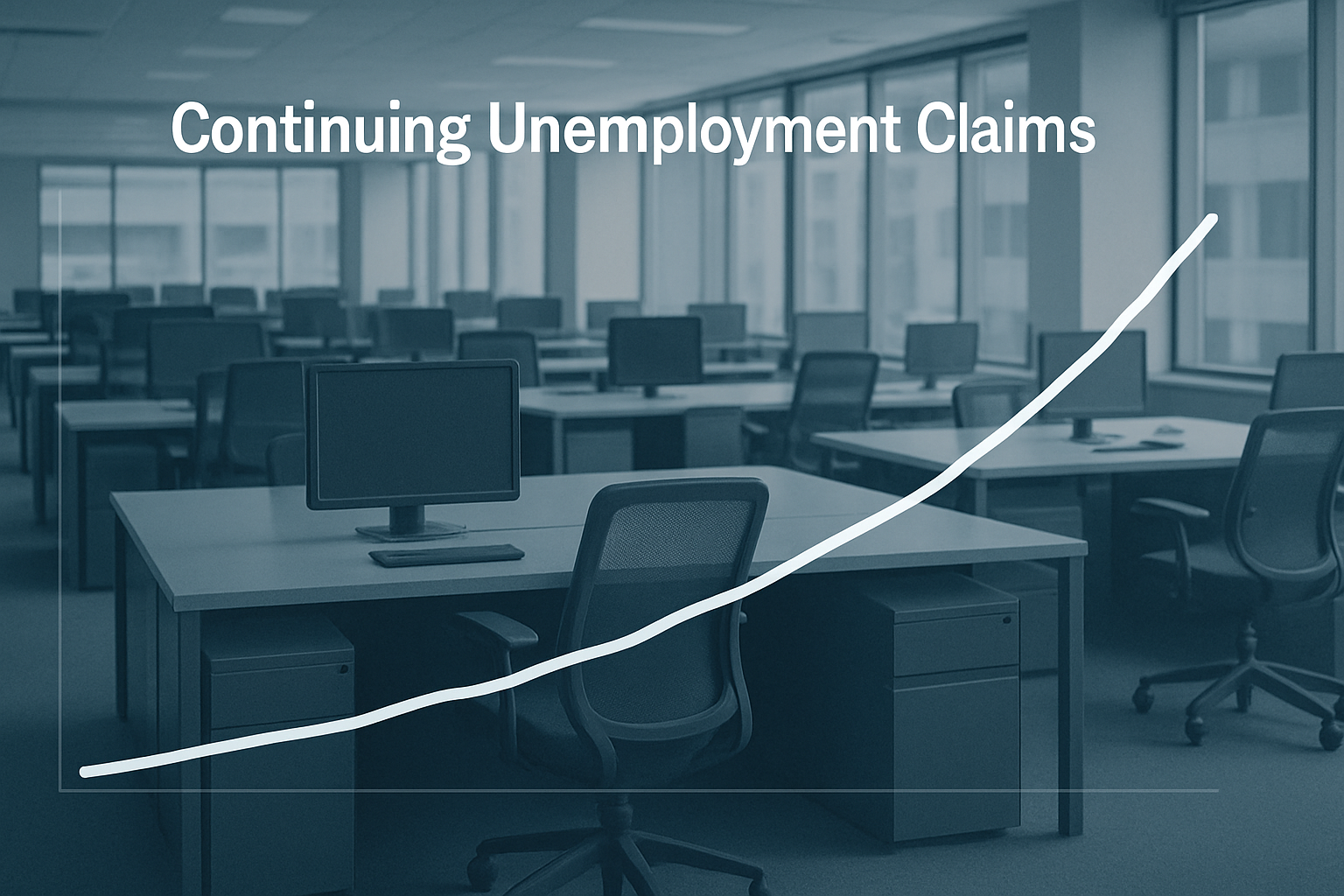The labor market is cooling. Not dramatically, not catastrophically, but with the steady, inexorable pace of a glacier retreating up a mountainside. The latest evidence arrived Thursday morning when the Department of Labor reported continuing unemployment claims hit 1.974 million for the week ending July 26 – the highest level since November 2021.
For those keeping score at home, that's up from 1.936 million the previous week and represents a slow but persistent upward climb that's been underway for months now. The significance? People who lose their jobs are taking longer to find new ones. The safety net is getting more crowded.
Now, this isn't 2008. It's not even 2020. But it is something worth paying attention to, especially when you place it in the context of the Federal Reserve's multi-year campaign to engineer exactly this kind of labor market softening without tipping us into recession – what I like to call "Operation Soft Landing."
The Fed, in its infinite wisdom, decided inflation was too hot partly because the job market was too tight. Their solution? Make it harder for companies to hire and easier for them to fire. Make capital more expensive. Cool things down. This continuing claims number suggests they're getting what they wanted, though perhaps on a delayed timeline that's characteristic of monetary policy effects.
What we're witnessing is the labor market equivalent of a slow puncture rather than a blowout. Companies aren't conducting mass layoffs (initial claims remain relatively low), but those who do lose their jobs are finding the path back to employment increasingly obstacle-strewn.
I mean, think about it this way: The Fed has been hiking rates since March 2022. We're now seeing the labor market effects that typically follow rate hikes manifesting in slow motion, like watching economic gravity assert itself at half-speed. The transmission mechanism is working; it's just working at a pace that's given everyone enough time to prepare.
The question now becomes whether this gradual deterioration stays gradual or accelerates. The labor market has shown remarkable resilience – some might say stubbornness – in the face of higher borrowing costs. But continuing claims are what economists call a "lagging indicator." They tell you where you've been, not necessarily where you're going.
Look at it through this lens: companies first slow hiring (check), then stop replacing departures (check), then start selective layoffs (beginning), then – if things get bad enough – resort to broader workforce reductions. We're somewhere in the middle of that progression, with different sectors at different stages.
Tech and finance jumped ahead with their restructurings last year. Healthcare somehow maintains perpetual worker shortages despite the macro environment. Manufacturing is sending mixed signals. It's a patchwork quilt of labor market conditions out there.
The conventional wisdom has been that we'd see unemployment rise much more dramatically as the Fed's rate hikes worked through the system. That hasn't happened yet – the unemployment rate remains historically low at 4.1%. But these continuing claims numbers suggest the first cracks might be widening in the foundation.
What's interesting is how companies have adapted to this high-rate environment. Rather than slash headcount dramatically, many have opted for hiring freezes, attrition, and selected pruning of staff. This time around, CFOs seem determined not to make the pandemic-era mistake of cutting too deeply, only to find themselves desperately trying to rehire when demand rebounds.
A model that I often use is that the labor market operates with significant hysteresis – a fancy way of saying that the path down looks different from the path up. Companies are reluctant to fire until they absolutely must, but once they start, the process can feed on itself. Similarly, once unemployment rises meaningfully, it tends not to fall quickly without significant stimulus.
For now, the continuing claims data suggests we're seeing the beginning of this process – not a crisis, but a meaningful shift from the worker-friendly job market we've enjoyed post-pandemic. The Fed has been trying to take away the punch bowl for months; it seems like the party is finally starting to wind down.
Anyway, the markets will parse these numbers and likely shrug them off unless they accelerate dramatically. Wall Street has largely priced in a soft landing, and these figures don't yet contradict that narrative. But for those 1.974 million Americans filing continuing claims – the highest number in nearly three years – the soft landing theory provides cold comfort. For them, the recession has already arrived.
